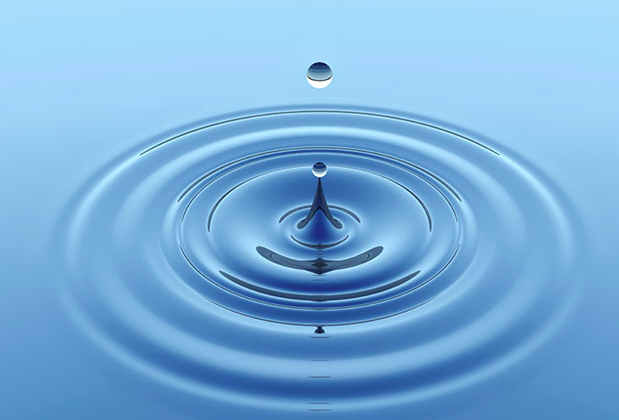
Course Handout
Semester I: 2020 -2021
|
Course No |
Course Title |
L |
T |
P |
U |
|
PHY307 |
Waves and Oscillations |
4 |
0 |
4 |
1. Course Instructor: Dr. Camelia Das
2. Text Book T1: Waves and Oscillations, N Subrahmanyam, BrijLal, Vikas Publishing House Pvt. Ltd; 2nd Edition, 1994.
T2: Waves and Oscillations. J C Upadhyaya, Himalaya Publishing House Pvt. Ltd, 1st Edition, 2016.
T3: Modern Optics, A. B. Gupta, Books And Allied Pvt. Ltd.
3. Reference Books:
R1: Fundamentals of Physics, Halliday, Resnick, Walker, John Wiley publication, 6th edition 2000.
R2: National Open University of Nigeria PH203 module.
R3: Physics for Scientists and Engineers with Modern Physics, Raymond A. Serway and John W. Jewett, Jr., Brooks/Cole, Ninth Edition, 2014.
4. Course Objective:
Waves or oscillation not only happens in mechanical systems but also in dynamic system. The heart beats of humans, the melodious music of different instruments, the rainbow everything is a property of wave behavior. The behavior of light, sound everything depend on the wave characteristic.
5. Course outcome:
After the completion of this course, the students will be able to explain
a. Simple harmonic motion of a pendulum.
b. Superposition of waves and formation of beats.
c. Velocity of sound and its dependence on weather.
d. Apparent change in frequency of sound due to relative motion of source and observer.
e. The physics behind different musical notes
f. Working principle of different musical instrument.
6. Lecture-wise plan:
|
Lecture Nos. |
Learning Objective |
Topics to be covered |
Chap./Sec. (Text Book) |
|
1-7 |
To understand periodicity and .oscillations, simple harmonic motion |
Oscillatory motion, Simple harmonic motion and harmonic oscillator, Differential equation of S.H.M. and its solution, Amplitude, Phase, Time period, Frequency of vibrations, Velocity, Acceleration, Energy of harmonic oscillator, Linear Oscillation of spring mass, Angular Oscillations (compound pendulum), |
T2: 1.1 – 1.7 |
|
8 - 14 |
To understand the concept Superposition of harmonic oscillator and Lissajou’s figure |
Principle of superposition, Superposition of two simple harmonic motions in a straight line having (a) equal frequencies, different frequencies, Superposition of N number of harmonic oscillators, Combination of two mutually perpendicular harmonic oscillator of same frequency, combination of two mutually perpendicular harmonic oscillator with nearly equal frequencies, Composition of two rectangular S.H.M.’s of frequencies in the ratio 2 :1, Lissajou’s figures, Superposition of two S.H.M.’s of different frequencies, modulation and beats
|
T1: 2.1 – 2.7 T2: 1.8 – 1.14 |
|
15-25 |
To understand the concept of free, forced and resonant vibrations |
Free vibrations, Undamped vibrations, Damped vibrations, Damped SHM and electrical circuit, Forced vibrations, Resonance and sharpness of resonance, Phase of resonance, quality factor |
T1: 3.1 – 3.8 |
|
26 - 34 |
To study motion of a wave |
Wave motion, Characteristic of wave motion, transverse wave motion , longitudinal wave motion, Spherical waveform, plane progressive wave, relation between frequency and wavelength, properties of longitudinal wave, Demonstration of transverse wave, Demonstration of longitudinal waves, Differential equations of wave motions, Particle velocity and wave velocity, Pressure of a longitudinal wave, Energy transport, Intensity |
T1: 4.1 – 4.13 T2: 4.8 – 4.9 |
|
35 - 40 |
To understand the concept of ripple and gravitational waves |
Prediction of the existence of gravitational waves, the laser interferometer gravitational-wave observatory (LIGO). |
R3: 37.6 |
|
41 - 45 |
To understand the velocity of waves: transverse and longitudinal vibrations. |
Velocity of Transverse Vibrations of Stretched Strings. Velocity of Longitudinal Waves in a Fluid in a Pipe, velocity of Sound. |
T2: 4.1 – 4.7 R2: 6.4- 6.5 |
|
46- 55 |
To understand the properties of Sound wave |
Sound wave, Speed of sound wave, Origin of sound wave, Material medium is necessity, velocity of longitudinal wave in Gases, Newton’s formula for velocity of sound, Laplace correction, Effect of Temperature, Pressure, Humidity, medium density, wind, Velocity of sound in water, air and isotropic solids, wave velocity and molecular velocity, velocity of sound and frequency,The Doppler Effect: Source in Motion and Observer Stationary Source Stationary and Observer in Motion Source and Observer both in Motion |
T1:5.1 – 5.14, 9.1 – 9.4
|
|
56 - 60 |
To understand the nature of stationary waves, concept of group velocity and phase velocity, energy density of stretched string, modes of vibrations |
Standing (Stationary) Waves in a String: Fixed and Free Ends. Analytical Treatment. Phase and Group Velocities. Changes with respect to Position and Time. Energy of Vibrating String. Transfer of Energy. Normal Modes of Stretched Strings. Plucked and Struck Strings. Melde’s Experiment. Longitudinal Standing Waves and Normal Modes. Open and Closed Pipes. Superposition of N Harmonic Waves. |
T1: 7.1 – 7.5 R1: 17.8 – 17.12 R2: 8.1 – 8.5 |
7. Evaluation Scheme:
|
Component |
Duration |
Weightage(%) |
|
Internal I/Assignments/Viva |
30 minutes |
25 |
|
MidTerm |
2 hours |
20 |
|
Internal II /Assignments/Viva |
30 minutes |
25 |
|
Comprehensive |
3 hours |
30 |
- Chamber Consultation Hour: Course Instructor will announce in the class.
(During the Chamber Consultation Hours, the students can consult in Faculty’s chamber without prior appointment.)
2. Attendance Policy: A Student must normally maintain a minimum of 75% attendance in the course without which he/she shall be disqualified from appearing in the respective examination.
3. Make-up Policy: A student, who misses any component of evaluation for genuine reasons, must immediately approach the instructor with a request for make-up examination stating reasons. The decision of the instructor in all matters of make-up shall be final.
Dr. Camelia Das
Date: 11.09.2020 C/I
- Teacher: Camelia Das